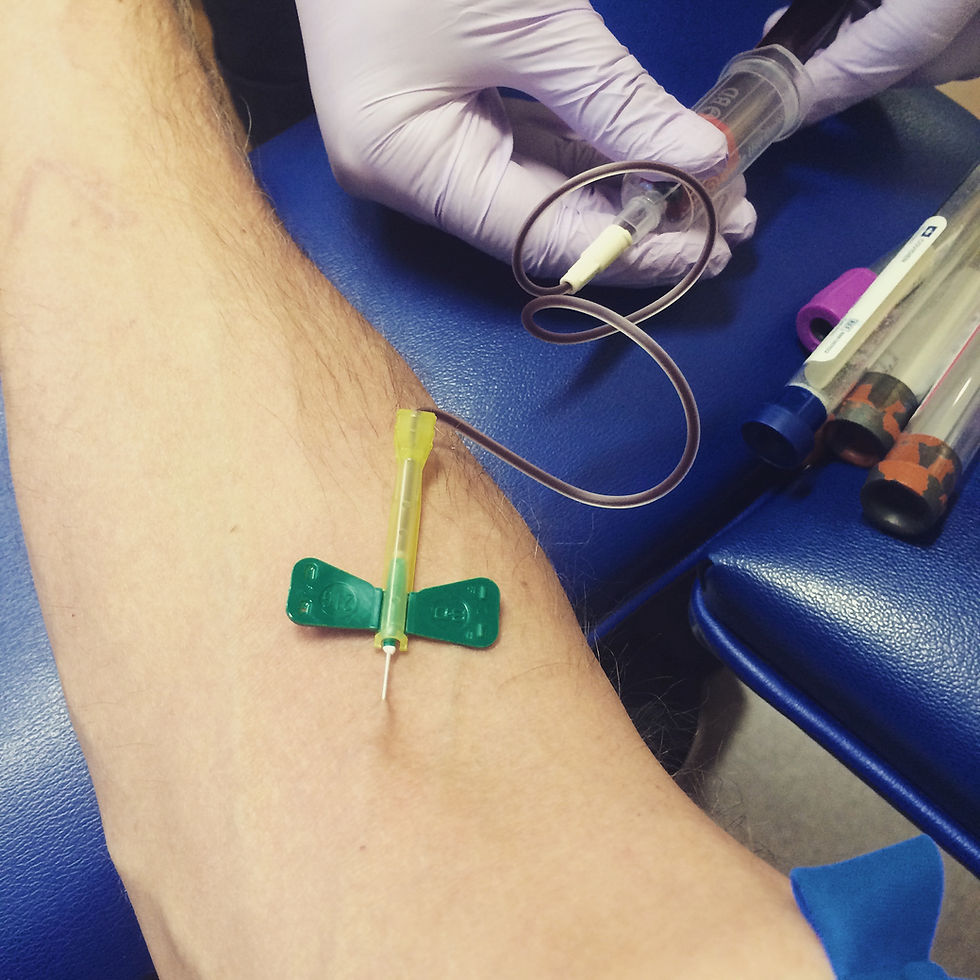Why InsideTracker is a fit for endurance athletes
- By Henry Howard
- Jul 25, 2017
- 4 min read

As an endurance athlete, I have a good understanding of what training it takes to build toward races. And while I eat a healthy diet, there is no foolproof way to know really what is going on inside without some testing.
Fortunately, I have found and used InsideTracker. After a blood draw, InsideTracker provides data-driven analysis, research and recommendations on various categories such as cortisol, iron, testosterone, cholesterol, vitamins and more. The recommendations include foods that are helpful in adjusting your levels into the optimized zone.
Earlier this month I had my fourth InsideTracker test, almost exactly one year after my first. I have learned a lot during that time, and have seen progress in several metrics. InsideTracker has helped me become a healthier, fitter and faster athlete.
My Vitamin D level is one improvement to tout. It started off as low, but has steadily climbed to the optimized zone. The first test showed my Vitamin D level at 26, where 32 and over is considered optimized. I followed the InsideTracker recommendations (primarily a daily Vitamin D supplement) and my levels have steadily climbed: 31 in October and hitting 36 most recently.
Among other results:

• My Iron Group levels have bounced around from low to too high but are now in the optimized zone. Since the first test a year ago, I have added more helpings of spinach, peanut butter, oats and black beans, as recommended by InsideTracker.
• My Cortisol numbers resemble a roller coaster. In fact, elevated cortisol levels can often indicate high levels of stress. My first test was very high (21.1), which I attributed to a stressful week, both at home and work. However, in subsequent tests it measured 22.1, 15.5 and back to 22 in the latest test. In previous tests, InsideTracker has recommended taking 300mg of Ashwagandha root twice daily after meals with water, which I have not done yet. However, these results indicate that I need to make a change. Another recommendation is to get sufficient sleep and rest, which of course is easier said than done.
• My Lipid Group falls under “Needs Work,” even though it has been consistent since the first test a year ago. Since that first test, I have followed the recommendations: take berberine supplement for 12 weeks, eat more beans, have a daily serving of nuts (I hit this four or five days a week) and have 4 grams of beta glucan daily. I have added oatmeal to my diet three or four times a week, as a way to lower my overall and LDL cholesterol.

• Another area that is labeled “Needs Work,” and has also received the exact same score four tests in a row is the Testosterone Group. The recommendations call for 112.5 grams of protein a day. Even though I have made a concerted effort to get more protein into my diet, over the past few months, my weekly counter shows that I average 87, 106, 111, 76, 95, 106, 103, 108, 90, 96, 99 and 92 grams per day. I have added chia seeds to my frequent oatmeal, which has helped drive up the numbers. But it appears that I need to do even more to get the protein my body requires, especially during elevated levels of training.
• My Vitamin B12 levels started off fine during early testing, rating a 492 and 741 in the first two tests, falling in the optimized range of 488 to 775. Then last March the level dipped to 472 and now measure 486. Vitamin B12 is crucial for energy production and muscle repair, another indication that my nutrition is not matching my training output. Most of the InsideTracker recommendations for this category are fish, red meat and fiber cereal. This will be the hardest category to adjust as I already eat fish twice weekly, eschew red meat (other than burgers, which are not among the recommended food groups for B12) and I don’t eat most cereals because of the gluten. Fortunately, eggs showed up on another list of foods with high Vitamin B12.
• One area of concern is an increase in my Sex Hormone Binding Globulin (SHBG), a protein produced primarily in the liver. From the recommendations, “Studies show that caloric restriction can lower testosterone levels and raise SHBG levels. Those with greater lean mass exhibit greater total testosterone.” As an endurance runner, I understand the need for fuel. Post-workout recovery snacks (or meals) help muscle growth, of course. But these results indicate to me that as I have watched my weight in order to run faster, there are issues underneath the surface that I am only aware of because of InsideTracker.
Action steps
While the vast majority of my InsideTracker results showed that I was in the optimized zone, there are areas that do need some increased attention. So, for the sake of accountability, here are the steps I will take in areas that require improvement.
Take 300mg of Ashwagandha root daily.
Increase daily protein to 112 grams per day.
Look for opportunities to increase Vitamin B12, including different types of fish.
Work in more servings of beans, oatmeal and fish.
Increase the amount of sleep I get each night.







Comments